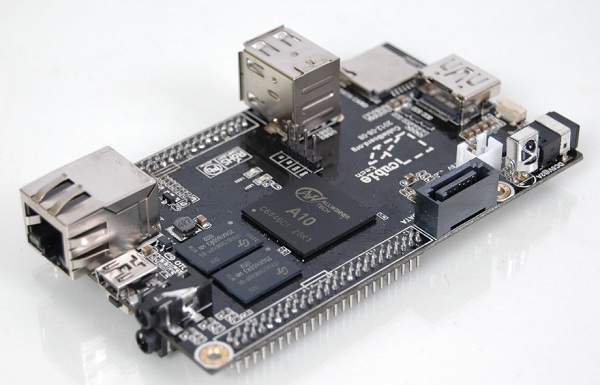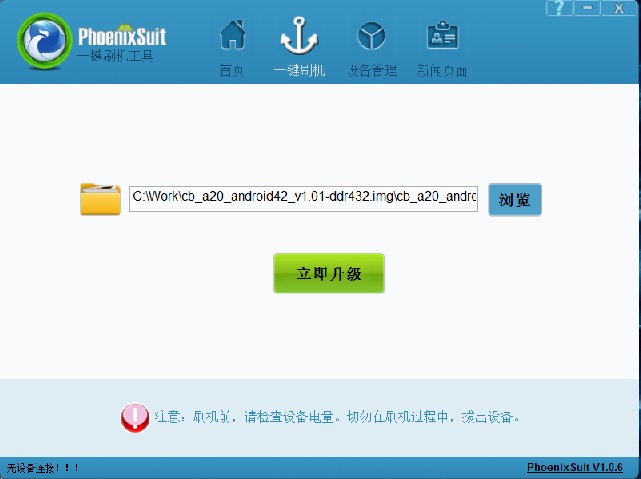User Tools
Sidebar
Table of Contents
Summary
In this article we are going through the steps of installing (re-installing) the Android image (LiveSuit type) onto the Cubieboard.
The Cubieboard comes with 4GB of internal storage memory (called NAND), where you can install an operating system like Android or GNU/Linux.
You need this guide if you want to upgrade the Android on your Cubieboard to the latest version.
You also need this guide if you want to re-install Android on the Cubieboard NAND memory, if you had replaced Android with a GNU/Linux distribution (in the NAND memory).
Prerequisites
Prepare A Mini USB Cable
Installing Livesuit Program
Please see the README.pdf in the above archives, if any. A Livesuit for Window8(64bit) screenshot is shown below
Getting the Prebuilt Images
Android TV 1.0
| URL | http://dl.cubieboard.org/software/a10-cubieboard/android/cubiebox_tvbox_rel1.img |
| Features | 1. Supports the USB RTL8192WIFI chipset for WiFi |
| 2. This is the original Android TV Image for Cubieboard. (It is listed here for historical purposes.) | |
| 3. We suggest that you use a newer version shown below. |
Android TV 2.2 (8192cu WiFi chipset)
| URL | http://dl.cubieboard.org/software/a10-cubieboard/android/cubiebox_tvbox_rel2.2.img |
| Features | 1. Supports the RTL8192CU WiFi chipset (If you have a USB WiFi dongle with the RTL8192CU chipset, select this image) |
| 2. With XBMC integrated (Media Centre Software) | |
| 3. Defaults to HDMI output (Select this image if you connect your Cubieboard to an HDMI display/TV) | |
| Other information | 1. The source code can be found at http://github.com/cubieboard |
| 2. For instructions on how to download and build yourself this Android image,please see https://github.com/cubieboard/manifests |
Android TV 2.2 (8188eu)
| URL | http://dl.cubieboard.org/software/ubuntuone/public/cubieboard/cb_a10_android/tvbox_2.2_8188eu.img.gz |
| Features | 1. Supports the RTL8188EU WiFi chipset (If you have a USB WiFi dongle with the RTL8188EU chipset, select this image) |
| 2. With XBMC integrated (Media Centre Software) | |
| 3. Defaults to HDMI output (Select this image if you connect your Cubieboard to an HDMI display/TV) | |
| Other information | 1. The source code can be found at http://github.com/cubieboard |
| 2. For instructions on how to download and build this Android image, please see https://github.com/cubieboard/manifests | |
| 3. We plan no newer Android firmware releases. Anyone can now get the source code and customize it by themselves |
Starting the Installation
- Start Livesuit, and select an appropriave LiveSuit image to write (such as those listed above)
- Connect the mini USB cable to your host computer (where LiveSuit is running)
DO NOT connect the miniUSB cable to your Cubieboard yet.
Make sure no cables are connected to the Cubieboard yet.
- Press and hold the FEL key on the Cubieboard. The FEL key is located below the mini USB port of the Cubieboard.
- Plug in the mini USB cable to the Cubieboard, and wait about 3 seconds.
- Release the FEL key
- Livesuit should start writing the image to Cubieboard
- Wait until LiveSuit finishes the writing of the image to the Cubieboard.
As soon as LiveSuit finishes the writing of the LiveSuit image to the Cubieboard, you can close the LiveSuit application and restart the Cubieboard.
The Cubieboard should boot into the image (for example, Android) that you just installed.



